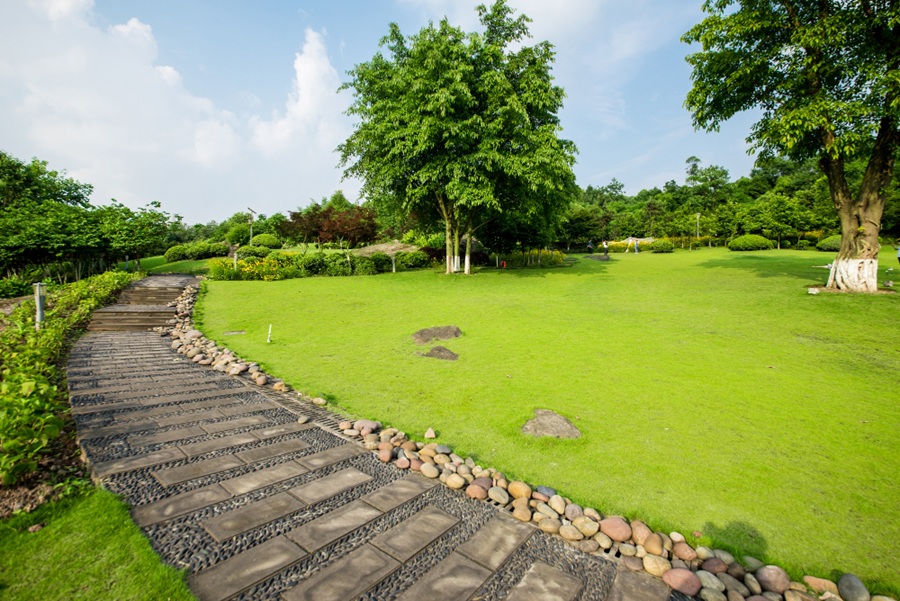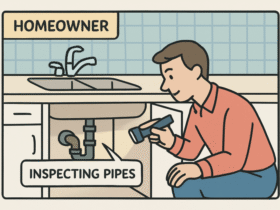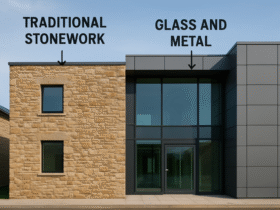Ever looked at a garden and felt like something was just… missing? The lawn’s neatly trimmed, the flowers are blooming, but the whole space still feels a bit flat. Chances are, it’s missing one simple thing: edging.
Edging might seem like a small detail, but it has the power to completely transform the look and feel of an outdoor space. Whether you’re working with a sprawling garden or a cosy patio, adding the right edging can take your space from “nice enough” to “absolutely stunning” almost instantly.
What Exactly is Edging?
Lawn edging is the material or technique used to define the boundaries between different areas in your garden or outdoor space. Think of the crisp line between your grass and your flowerbeds, or the neat separation between a gravel path and a vegetable patch.
It’s one of those things you don’t realise you need until you see the difference it makes.
Some common types of edging include:
- Brick edging – neat, traditional, and sturdy
- Stone edging – perfect for a natural, rustic look
- Metal edging – sleek and modern, ideal for clean lines
- Wood edging – great for raised beds or a softer, organic feel
- Concrete edging – durable and versatile, suits a range of styles
Each type brings a different character to the space, but they all serve the same essential purpose: creating order and boosting visual appeal.
Why Bother with Edging?
It’s easy to dismiss edging as unnecessary. After all, isn’t mowing the lawn and keeping the beds tidy enough? Not quite.
Good lawn edging instantly makes a garden look more professional. Even the most beautiful planting schemes can seem messy without defined borders. Edging frames your work, giving everything a polished, intentional feel. It’s a bit like putting a painting in a frame — the image might be lovely on its own, but the frame makes it complete.
There’s also the bonus of reduced maintenance. With solid edging in place, grass is less likely to creep into your flowerbeds, and mulch, stones, or bark stay neatly contained. You’ll spend less time fixing messy borders and more time actually enjoying your space.
Clear divisions between zones make organisation much simpler too. Paths stay paths, lawns stay lawns, and flowerbeds don’t wander where they shouldn’t. It all feels purposeful and well planned.
In some cases, edging can even improve drainage. Certain materials, when properly installed, help guide water away from sensitive plants or prevent soil erosion during heavy rain.
Choosing the Right Edging for Your Space
The best edging depends on a few key factors. Start with the style of your garden. A modern, minimalist space usually suits sleek metal or straight concrete edges, while a traditional or cottage garden often looks better with natural stone or timber.
Budget will also influence your choice. Wooden edging tends to be more affordable, but it might not last as long as brick or stone. It’s worth thinking about longevity, not just upfront cost.
Functionality matters too. If you simply want a visual border, lighter materials will do the job. If you need to retain soil or manage foot traffic, you’ll want something stronger and more secure.
Finally, consider how much effort you’re willing to put into installation. Some edging options are quick DIY projects, while others might need more serious groundwork or even professional help.
Setting It Up Right: A Few Essentials
If you’re installing edging yourself, it pays to take your time with the basics. Mark out exactly where you want the edges to go first. String, chalk lines, or even laying out a hosepipe can help you visualise the shape.
Preparing the ground properly is vital. Dig a neat trench that’s the right depth and width for your material. Rushing this part can lead to uneven lines that spoil the final look.
When setting the edging in place, make sure it’s anchored securely. Materials that aren’t firmly fixed can shift over time, especially with weather changes or heavy use. Keeping everything level is just as important. A lopsided border stands out for all the wrong reasons.
And think long term. Choose materials that will withstand the elements in your area, and make sure the edging is set up in a way that makes future maintenance easy, not harder.
Small Changes, Big Differences
Edging is one of those projects where you can see real results quickly. Even framing a simple lawn with a neat border can make the whole area pop. Defining a path, even with basic gravel and clean edges, makes it look intentionally designed rather than an afterthought.
Planting beds benefit massively too. With crisp edges, flowers and shrubs stand out more and the whole layout looks sharper. You can also use edging to separate different functional zones — a lounging area here, a kitchen garden there — without needing fences or bulky dividers.
And don’t overlook edging around trees. A clean circular border not only looks smart but helps protect the tree base from mowers and foot traffic.
Why This Small Upgrade Matters So Much
It’s tempting to focus all your energy on planting or patio furniture, but edging quietly does a lot of the heavy lifting when it comes to a garden’s overall look and feel.
It pulls everything together, gives your hard work a proper stage, and keeps your outdoor space looking sharp with far less effort over time.
If your garden feels a little unfinished, edging might just be the missing link you’ve been looking for.







